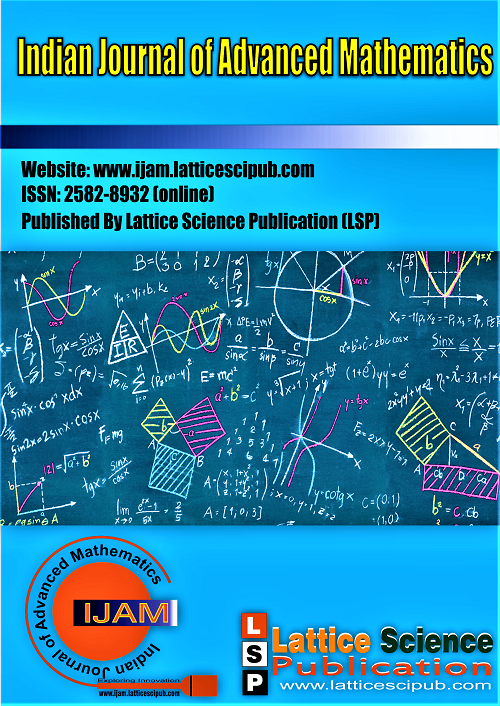An Elementary Proof for Fermat's Last Theorem using a Transformation Equation to Fermat's Equation
Main Article Content
Abstract
Fermat’s Last Theorem states that there are no positive integers x, y and z satisfying the equation x n + y n = z n , where n is any integer > 2. Around 1637 Fermat proved that there are non-zero solutions to the above equation with n = 4. In the 18th century Euler treated the case n = 3, thereby reducing the proof for the case of a prime exponent ≥ 5 in this proof we hypothesize that r, s and t are positive integers satisfying the equation rp + sp = tp , where p is any prime >3 and establish a contradiction. We use an Auxiliary equation x 3 + y3 = z3 and create transformation equations. Solving the transformation equations we prove that only a trivial solution exists in the main equation r p + sp = tp .
Downloads
Article Details

This work is licensed under a Creative Commons Attribution-NonCommercial-NoDerivatives 4.0 International License.
How to Cite
References
Hardy G. H. and Wright E. M., An introduction to the theory of numbers, 6th ed. Oxford University Press, 2008, pp. 261-586. http://dx.doi.org/10.1080/00107510903184414
Lawrence C. Washington, Elliptic Curves, Number Theory and Cryptography, 2nd ed. 2003, pp. 445-448. https://doi.org/10.1201/9781420071474
Andrew Wiles, Modular Elliptic Curves and Fermat's Last Theorem, Annals of Mathematics, 1995; 141(3); pp.443-551. https://doi.org/10.2307/2118559
13 Lectures on Fermat's Last Theorem by Paulo Ribenboim, Publisher: Springer , New York , originally published in 1979, pages 159. https://doi.org/10.1007/978-1-4684-9342-9
P. N Seetharaman. (2024). An Elementary Proof for Fermat’s Last Theorem using Ramanujan-Nagell Equation. In Indian Journal of Advanced Mathematics (Vol. 4, Issue 2, pp. 10–15). DOI: https://doi.org/10.54105/ijam.b1180.04021024
Borgohain, D. (2019). Effects of Inclination of the Plate Embedded in Porous Media on Radiative and Chemically Reactive MHD Convection. In International Journal of Recent Technology and Engineering (IJRTE) (Vol. 8, Issue 4, pp. 10239–10245). DOI: https://doi.org/10.35940/ijrte.d4451.118419
Sujitha. S, Ms. S., & D, Dr. Piriadarshani. (2019). Numerical Computation of Delay Differential Equation using Laplace Transform and Lambert W Function. In International Journal of Innovative Technology and Exploring Engineering (Vol. 8, Issue 11, pp. 1794–1797). DOI: https://doi.org/10.35940/ijitee.k1772.0981119
Khadka, C. B. (2023). Transformation of Special Relativity into Differential Equation by Means of Power Series Method. In International Journal of Basic Sciences and Applied Computing (Vol. 10, Issue 1, pp. 10–15). DOI: https://doi.org/10.35940/ijbsac.b1045.0910123
Abbas, M. A. M., Shaker, I. F., Gawad, A. K. A., & Awad, A. A. D. I. (2020). Simplifying of DLT Equations for a Single Digital Image and its Application in Architectural Façades Documentation. In International Journal of Engineering and Advanced Technology (Vol. 9, Issue 3, pp. 2120–2137). DOI: https://doi.org/10.35940/ijeat.c4736.029320





